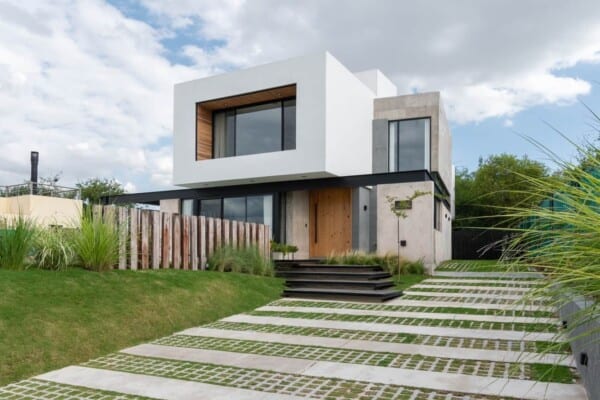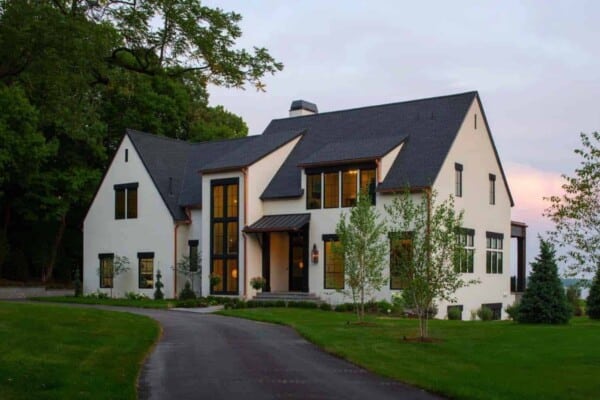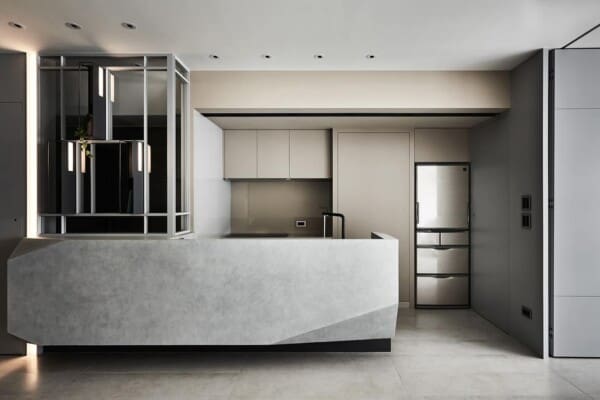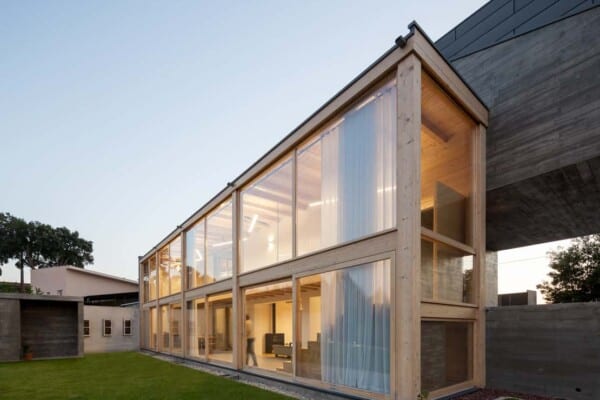Annex House is a residential project designed by DUBBELDAM Architecture + Design in 2013.
It is located in Toronto, Canada.
Annex House by Dubbeldam Architecture + Design:
“When the client, a young couple, purchased this property with its two structures – the main building and coach house – both had been used as rooming houses for many years. The client wished to convert the fragmented property back into a single family residence, suitable for their expanding family and optimized for entertaining, while taking advantage of the two buildings on the site. The distinct structures define an outdoor space that has been designed as a courtyard and outdoor extension of the kitchen and dining rooms.
The courtyard evolves from season to season and from day to day; it is a quiet resting place, brunch patio, and reading sanctuary on the way to yoga in the coach house, coming alive with the kids’ after school activities or as guests arrive to a backyard barbeque. On the interior, the open plan is divided by delineating elements other than walls that both defi ne and connect spaces through materiality and openings.
They create a dialogue between the spaces, frame specific views, and aid in defining the distinct character of each space. In the vestibule, a whitened oak screen is divided into solid, clear and translucent panels that allow curated views into the other rooms. The ground floor is organized around a central volume that disguises storage, ductwork, and structural elements, while featuring a linear gas fireplace, niches for display and seating.
As the wood clad volume wraps to the dining room, cabinets become built-in benches, providing casual seating when entertaining larger groups. Contained within the centre of this volume is a void – a discrete bathroom clad in white marble with floating fixtures and a customized stone vanity – conceived to be luminous and smooth like the interior of a shell.
In contrast, the volume’s exterior surface is articulated in a play of closed and open sections, and clad in white oak and rosal limestone that wraps around its entire surface. Towards the rear of the house, a secondary floor to ceiling millwork volume clad in walnut is positioned between the dining and kitchen areas. Incorporating cleverly-located perforations to allow for views, conversation and exchange between the two spaces, this volume houses a bar, wine fridge, storage and a TV visible from the kitchen, concealed behind panels that pivot, raise and slide open.
The horizontal grain of the wood directs views to the large openings at the rear and beyond to the courtyard and coach house. As the spaces of the interior are joined through views and materials, the coach house and house are intimately connected in the same fashion. Each is clad in a different warm tone of wood veneer fiber cement panels with aligning seams and window openings, allowing plentiful views between them.”
Photos courtesy of DUBBELDAM Architecture + Design




















































